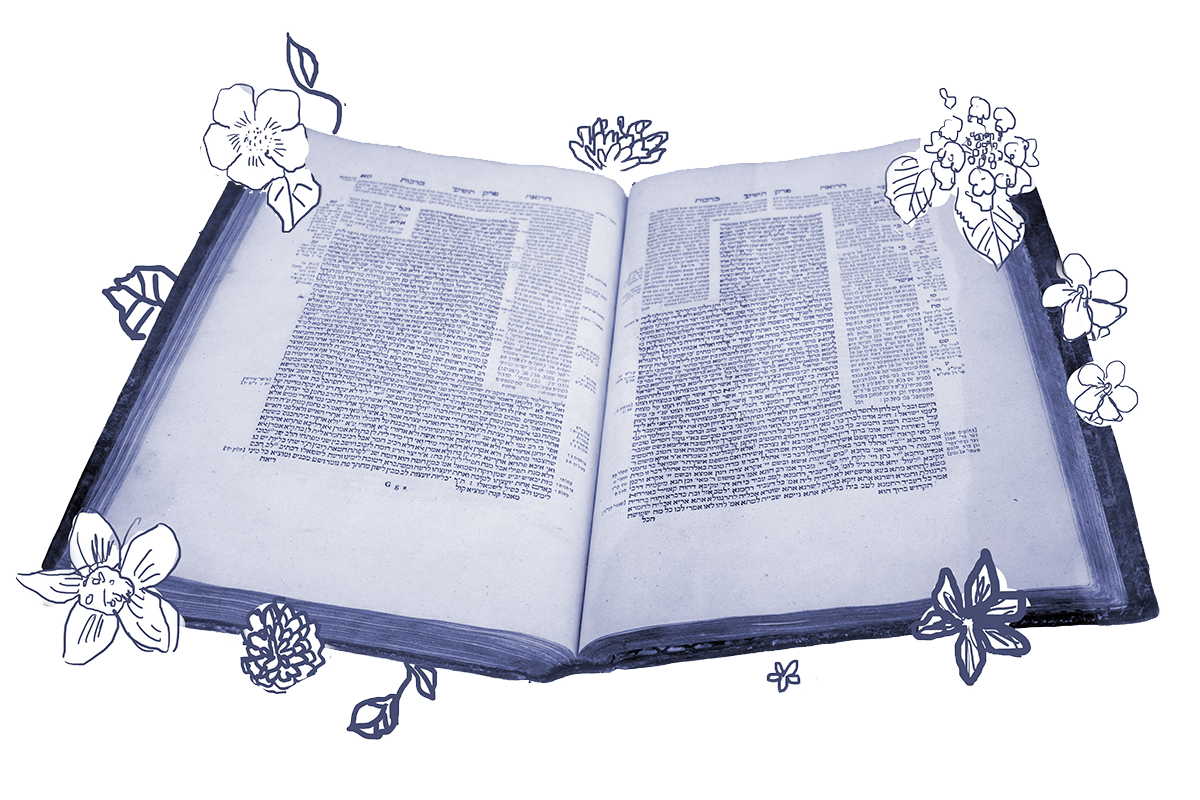On today’s daf we find ourselves nearly at the end of Pesachim chapter 7, which concerns itself with roasting and consuming the paschal lamb. We have learned previously that unlike some large holiday meals we can imagine (or may have even hosted – seder for 40, anyone?) in which the party might spill from the house into the backyard with guests eating and drinking in various locations throughout the night, the paschal lamb must be eaten in one location.
This strange rule is biblical; in Exodus 12:46, we read: In one house shall it be eaten; you shall not carry out any of the meat from the house to the outside. So, it’s not just a matter of decorum, but a biblical commandment that, if transgressed, would effect a severe punishment.
A mishnah on today’s page explores a particular detail: What happens if one of the roasted animal’s limbs ends up protruding outside of the boundary of the location in which the seder is being conducted? In doing so, the Mishnah describes how to delineate the boundaries themselves:
How does one determine the outer boundaries of a particular location?
With your help, My Jewish Learning can provide endless opportunities for learning, connection and discovery.
Anything that is located from the inside of the doorway inward is considered as though it is inside, and anything that is located from the doorway outward is considered as though it is outside.
After describing this prohibition, the Gemara continues by exploring a parallel case you might not expect. To say certain prayers, Jews must be part of a minyan (a prayer quorum of ten). But what is required for ten Jews to be together physically to pray? What are the boundaries of that meeting?
Rav Yehuda said that Rav said: And the halakhah is similar with regard to prayer, in that one who is standing outside the doorway cannot be included together with those praying inside.
Rav disagrees with Rabbi Yehoshua ben Levi, as Rabbi Yehoshua ben Levi said: Even a barrier of iron does not separate between the Jewish people and their Father in Heaven.
This exchange between Rav Yehuda and Rabbi Yehoshua ben Levi seems to be about two different things. First, there is the proximity of worshipers to each other: How close do you have to be to everyone else in order to be included in the minyan? Is someone standing just outside the door considered to be part of the congregation? What if they’re on the other side of an adjacent room but you can still see them? These questions are still relevant today in new ways as Jewish communities explore the requirement for communal prayer in digital spaces.
Second, there is the question of proximity to God. For Rabbi Yehoshua ben Levi, the relationship between God and the Jews supersedes all physical barriers. This profound statement is one of my favorites in all of the Talmud.
Many medieval commentators side with Rabbi Yehoshua ben Levi in the matter of prayer. Rashi says that there is no such thing as a barrier before the Omnipresent since everything is revealed to God. The Meiri, a medieval Spanish commentator, says that even a wall between members of a minyan won’t stop God from viewing them as one group. Maimonides agrees, saying that when the Kohanim offer the priestly blessing, everyone within hearing range is included, even if some are behind a barrier.
The Torah tells us that when we commemorate the Exodus from Egypt, we have to eat the paschal sacrifice all in one location, with delineated boundaries — perhaps because our ancestors had to eat it hunkered down in their own homes while the Angel of Death prowled the streets outside. But when coming together with fellow Jews to pray to God, this is not the case — as no barrier can separate the Jewish people and their Creator in Heaven. And, as the Rabbi Yehoshua ben Levi seems to imply, no barrier should separate Jews from one another, either.
Read all of Pesachim 85 on Sefaria.
This piece originally appeared in a My Jewish Learning Daf Yomi email newsletter sent on February 14th 2021. If you are interested in receiving the newsletter, sign up here.



